Time for change
The Tree Trust applauds the Parliamentary Commissioner for the Environment, Simon Upton, for his recent report on the loss of green space in most of our cities. Struck by the treeless expanse of dark roofs in Hamilton North he worries about how hot and unpleasant these suburbs will become as global warming continues. In Auckland and Hamilton green space has diminished from 70% of urban areas to less than 55%.
As planners have tried to rein in urban sprawl, sections have got smaller while at the same time houses have got bigger, and many outdoor areas paved over. On Saturday morning radio, Upton said that in general the more leaves in an area the greater the benefit in terms of pollution reduction, slowing the flow of rainwater, and reducing summer temperature.
Cambridge Green Infrastructure is under constant pressure from developers and householders who find autumn leaves difficult to handle. We try to counter influencers from both areas.

Camelia Walk by Lakewood
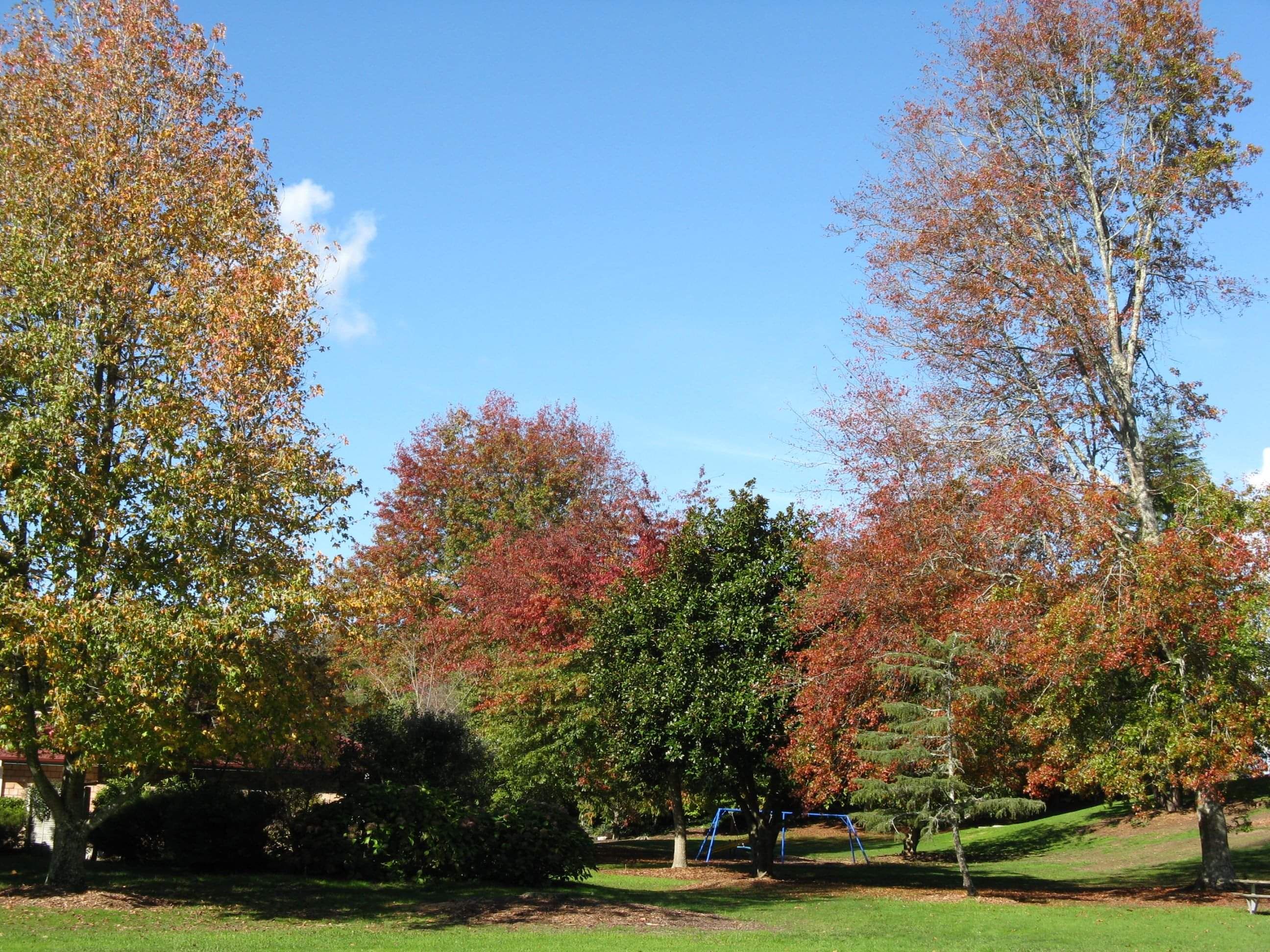
Lindsay Park, Coleridge St.,Leamington
Old, gnarly trees
Gnarly, half-rotten, old trees are precious. We need to cherish them,’ writes the philosopher/ environmentalist George Monbiot, in a recent ‘Guardian’ article. ‘Big old trees are the keystone structures of forests on which many species depend.’
This brings to mind the wonderful old tawa, rata and rimu to be seen at Maungatautari, and if you walk to the tower in the Southern Enclosure you can get up close and personal with such ecosystems (see picture). You can see the vines, the epiphytes, the mosses, lichens and fungi that flourish on these giant trees.
Street trees
A number of recent newspaper articles set me thinking about the importance of Cambridge green infrastructure / trees in our urban environment. The first was a report that in Sydney all new stand-alone houses must have space for the planting of a garden tree. This is part of the council’s attempt to combat climate change; the trees would not only help decrease carbon dioxide levels but, by transpiration, would also cool the air in summer, far better than a shade canvas.
The second began with a report about the removal of phoenix palms from Tamihana Avenue in Matamata. The trees were removed at the request of the residents, apparently because the spines on their leaves can cause nasty infections, and the trees attract pigeons. Sadly however, when the residents were surveyed by council concerning replacements, a narrow majority of those who replied did not want any trees. Now there is an outcry from other residents who say they were not even consulted and they do want replacements.
We need to embrace urban trees; like the air we breathe, they are a commons. Yes, they can be inconvenient – they drop leaves and nuts, they sometimes obstruct views. However, both for the mitigation of the heating effects of climate change, as well as for their ability to help reduce greenhouse gases and air pollution they are vital in our towns and cities. It is time our own council had a firm policy regarding Cambridge green infrastructure in towns, both in gardens and streets. Meanwhile, most of us can at least plant a garden tree.
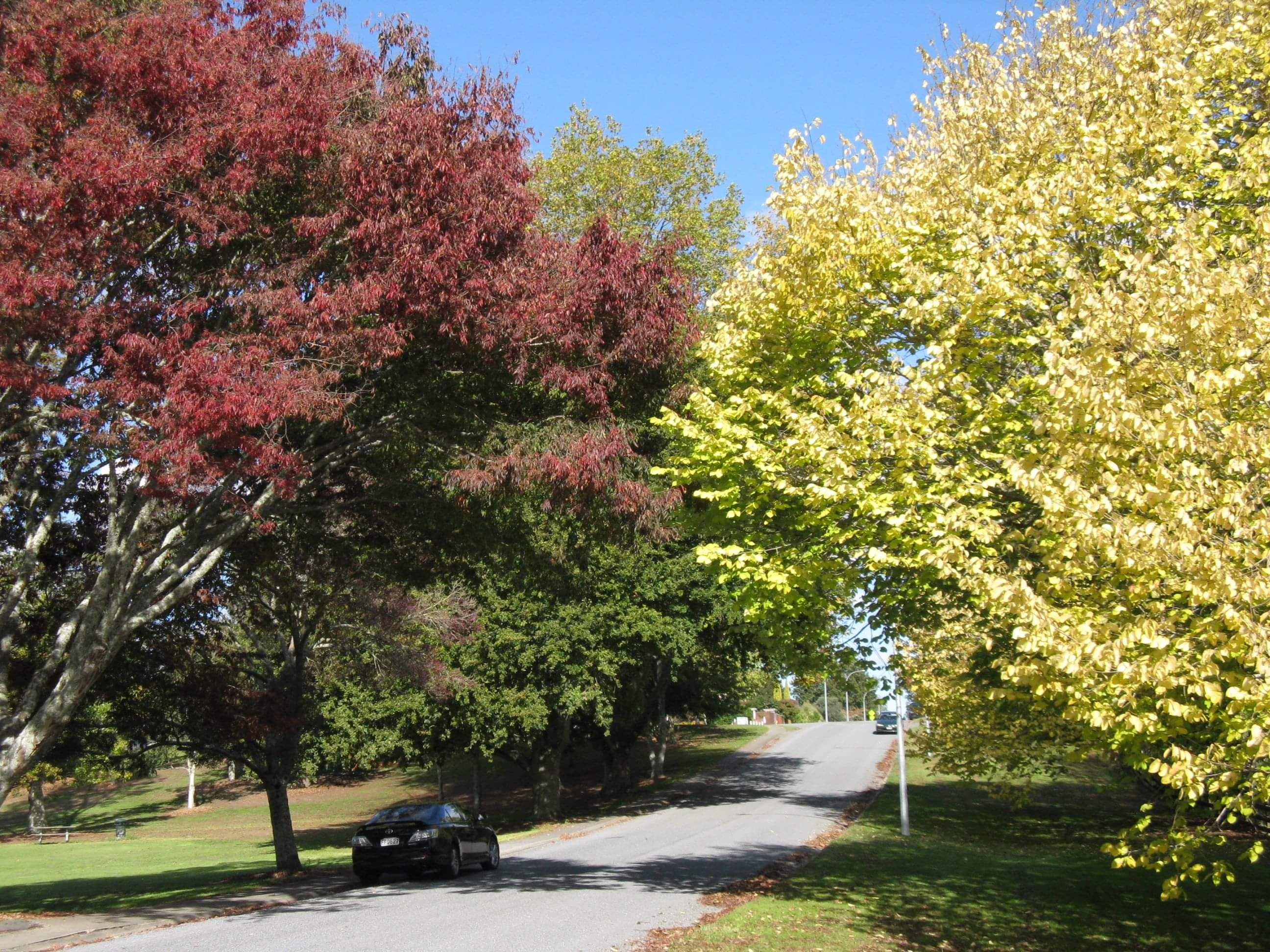
Coleridge Street

A nice shady crabapple tree

An old, gnarly cherry put to good use
Are our Protected Trees really protected?
This amazing Black Walnut glorified the entrance to Lola Silcock Park in Bath Street. It stood on the corner of an empty section in Le Quesnoy Place. It was a Protected Tree, but over the years various people purchased the property, knowing the status of the tree, and made application to have it removed.
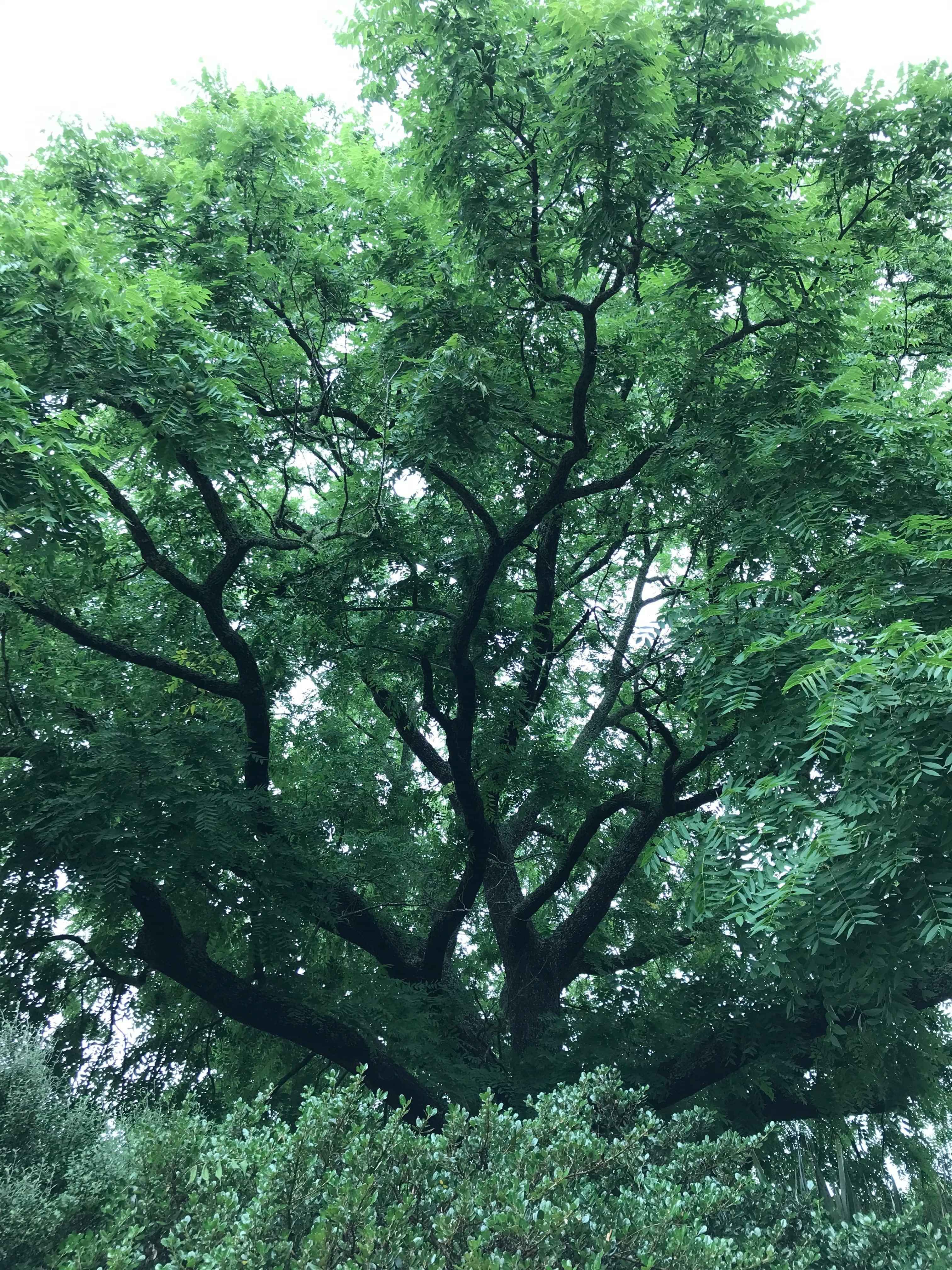
One day it will look like this …
A Listener article (April 9-15 2022) included an article (Over and Out) on the world-wide trend for people departing big cities for smaller towns. Housing costs, Covid-19 and the ability to work from home are part of this trend, but research at Waikato University has detected a further driver. In their “20-minute city” survey they discovered that young and old, single or married with kids, everyone wanted two things above all:
local shops ( unsurprising)
access to wilderness, gardens and parks (surprise!)
Project leader Professor Iain White is quoted as saying “We’re hoping the 20-minute city idea will influence decision makers, because we are in danger of losing those green spaces that, actually, people value extremely highly.”
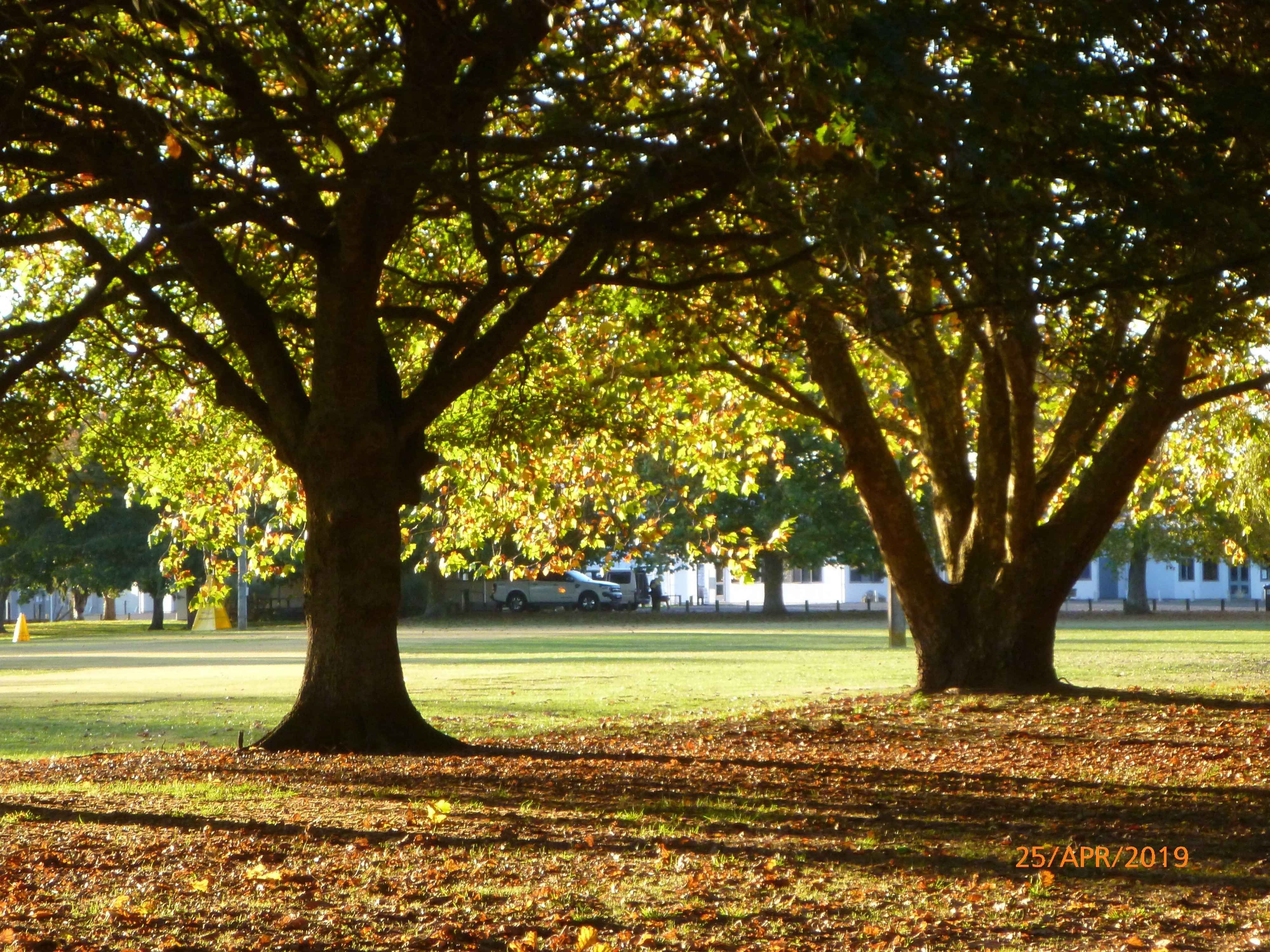
Will it look like this?
Spring and the Earth Spins Faster
While visiting family in Western Australia, I popped down to the local bookshop to see what treasure I could find. And yes! another book by the German forester, Peter Wohlleben, whose earlier book, The Hidden Life of Trees, was a revelation to many. This one, The Secret Network of Nature, is a more general work, which tells how wolves can alter the course of a river, or earthworms control wild boar populations. And yes, it almost always involves trees!
But did you know that trees can even influence the rotation of the earth?

A tribute
This month I thought it was time to acknowledge and celebrate all the people, mostly unknown, whose foresight has made Cambridge the beautiful Town of Trees that it is today. As the heat of summer approaches, we really appreciate the beauty and coolness of our wonderful trees, such as the handsome oak by St. Andrew's church.
We would like to acknowledge all those who have helped in this endeavour in the past with their labour and their donations. We also thank the Waipa District Council for their support, and Mitre 10, who sponsor these monthly articles and support us in other ways as well.
If you want to support the Tree Trust, become a financial member, for even if you are unable to join our work days, your membership will help us. Contact us using our "Contact Us" page on this website.

Our nursery and home base
Planting for the future
Urban Planting in a Warming Climate – long-term planning.
The Tree Trust is currently working with the Waipa District Council arborist, James Richardson, to grow oaks that will be able to withstand the hotter and often drier summers that we are likely to experience in the next 100 years and beyond. Many of our favourite oaks in Cambridge prefer cooler climes, such as the English oak (Quercus robur) and some of the North American ones like northern red oak (Q. rubra). As the average temperature rises these species may begin to suffer stress.
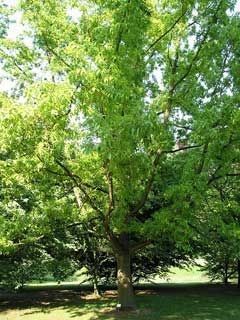
Visit Our Site
89 Thornton Road
Cambridge
Waipa
New Zealand
Donations
Kiwibank, 38-9005-0635102-01

